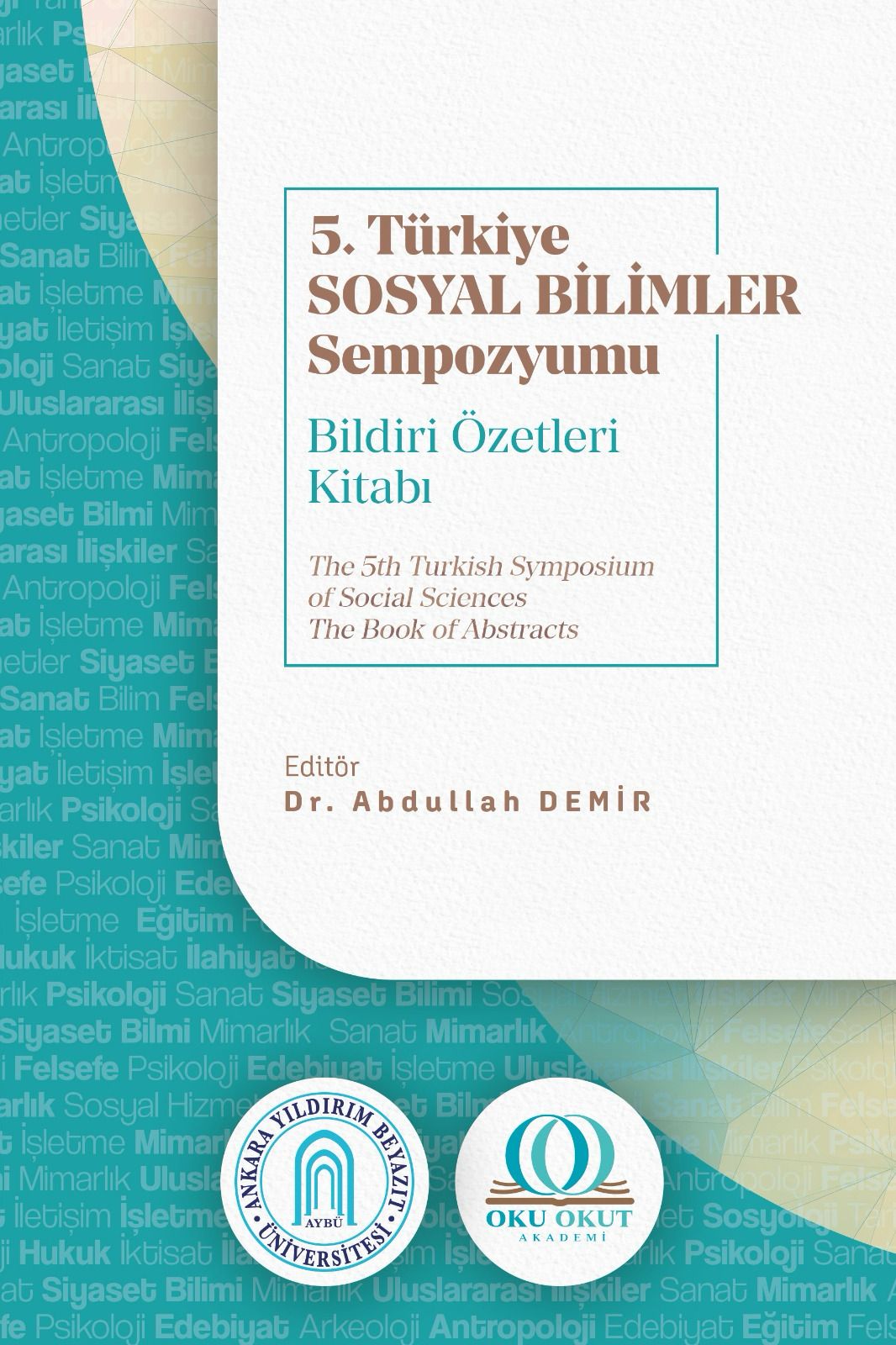Some Analyses about the Definition of Substance and Its Parts in Aristotle and Ibn Sīnā
Aristoteles ve İbn Sînâ’daki Cevher Tarifi ve Kısımlarına Dair Bazı Çözümlemeler
The theory of substance and accident, which was inherited from Aristotle, is one of the most significant topics in the history of classical philosophy. It has significant implications in both the physical and metaphysical fields. Its influence in these fields is not merely an extension arising in the context of different problems; rather, it is one of the most significant theories in the development of physics and metaphysics. Furthermore, the theory of substance and accident is also a key subject in logic. It is particularly relevant in the context of categories. Both philosophers and theologians in Islamic thought have used this theory since its inception, and its application and sphere of influence have differed between the two schools. They differ significantly on sub-issues such as the understanding and definition of substance, the priority of accident over substance, the existence of accident in accident, and the designation of God as substance. Although the essence-attribute theory dates back to Aristotle, the meaning of this concept in his work is unclear. This ambiguity has preoccupied subsequent philosophers. In the works of Ibn Sina, one of the Islamic world’s leading philosophers, the theory is seen to have gained a clearer and more explicit meaning through commentators’ solutions to the problems raised by this concept. This study examines Ibn Sina’s definition of substance and how he used the concept, as well as his contributions to existing definitions and classifications of substances. It highlights areas in which the philosopher’s views differed from those of Aristotle. In this context, Ibn Sina’s work Al-Shifa: Metaphysics and al-Shifa: Categories, alongside Aristotle’s Metaphysics and Categories, became the primary sources of reference. References were occasionally made to the similarities and differences between Ibn Sina’s views on various topics and issues, and the views of certain Aristotelian commentators, such as Simplicius, and philosophers, such as Plotinus and Porphyry. The aim is to demonstrate that the phrase ‘when found in a’yan’ added to the definition of substance is related to understanding substance in terms of its essence, as well as correctly understanding and applying the classification into first and second substances. It is also demonstrated that the concept of ‘never’ added to the phrase ‘not found in a subject’ in the definition of substance refers to the immutability of substance’s nature and the unacceptability of what is found as substance in one place being found as an accident in another. The Aristotelian distinction between first and second substances is problematic because it prioritises the sensory. To overcome this, a distinction is made between ‘priority’ and ‘worthiness’. Furthermore, it is demonstrated that, in Ibn Sina’s understanding of substance, priority is given to essences and rational substances.
Aristoteles’ten miras olarak gelen cevher ve araz teorisi klasik dönem felsefe tarihinin en önemli konularındandır. Teorinin hem fizik hem de metafizik alanında önemli uzanımları bulunur. Teorisinin bu alanlardaki etkisi sadece farklı sorunlar bağlamında gündeme gelen bir uzantı olması değil, fizik ve metafiziğin kurgusunda karşılaşılan en önemli teorilerden olması yönüyledir. Bunların yanı sıra cevher araz teorisi aynı zamanda mantık ilminin de önemli bir konusudur. Özellikle kategoriler konusuyla birlikte gündeme gelir. Bu teori İslam düşüncesi içerisinde de ilk dönemlerden itibaren gerek filozoflar gerekse de kelamcılar tarafından kullanılmış ve her iki ekolde kullanımı ve etki alanı farklı olmuştur. Cevherin hem anlaşılması ve tanımlanması hem de cevherle ilgili araza önceliği, arazın arazda bulunması, Tanrı’ya cevher denilmesi gibi alt meselelerde her iki ekolün ciddi anlamda farklılaştığı görülmektedir. Cevher – araz teorisi Aristoteles’e kadar geri gitmekle birlikte bu kavramın Aristoteles’teki karşılığı ve anlamı konusu net değildir. Bu durum sonraki dönemlerde filozofları ciddi anlamda meşgul etmiştir. İslam dünyasının önde gelen filozoflarından olan İbn Sînâ’nın eserlerinde ise bu kavramın şarihler eliyle de gündeme getirilip tartışılan sorunlarına yönelik çözümlerler teorinin daha belirgin ve açık bir anlam kazandığı görülmektedir. Bu çalışmada İbn Sînâ’nın cevher kavramını tanımlaması, kullanılması ve süregelen cevher tarifine yaptığı ekleme ve cevherlerin sıralandırılması gibi sorunlar ele alınarak filozofun Aristoteles’ten farklılaştığı bazı noktalar öne çıkarılmaya gayret edildi. Bu bağlamda İbn Sînâ’nın eş-Şifâ: Metafizik ve eş-Şifâ: Kategoriler eserleri ile Aristoteles’in Metafizik ve Kategoriler eserleri öncelikli müracaat kaynakları oldu. Zaman zaman İbn Sînâ’nın konu ve meselelerle ilgili görüşleriyle Simplicius gibi bazı Aristoteles şarihleri ile Plotinus ve Porphyry gibi filozofların görüşleri arasında süreklilik ve farklılığa da gönderme yapıldı. Cevherin tarifine yapılan “a’yânda bulunduğunda” ibaresinin hem mahiyet olarak cevheri anlama noktasında hem de birinci ve ikinci cevherler şeklindeki sıralamanın doğru anlaşılıp doğru yapılmasıyla ilgili olduğu ortaya konulmaya çalışıldı. Cevherin tarifindeki “bir konuda bulunmayan” ifadesine eklenen “asla” kavramının ise cevherin mahiyetinin değişken olmadığı, bir yerde cevher olarak bulunanın başka bir yerde araz olarak bulunmasının kabul edilemezliğiyle ilgili olduğuna işaret edildi. Aristotelesçi birinci ve ikinci cevher ayrımının sorun görüldüğü bu ayrımının duyusal olanı önceleyen bir kriterden hareket ettiği ve bu sorunu aşma için “önce” olma ile “layık olma” arasında ayrıma gidildiği gösterildi. İbn Sînâ’nın cevher anlayışında ise önceliğin mahiyetler ve aklî cevherlere verildiği ortaya konulmaya çalışıldı.

Copyright (c) 2025 Ömer Ali Yıldırım (Yazar)
This work is licensed under a Creative Commons Attribution-NonCommercial 4.0 International License.
The CC BY-NC 4.0 license permits sharing, copying, and reproducing the work in any medium or format; it also allows adapting, transforming, and building upon the material, provided that appropriate credit is given to the original work and that it is not used for commercial purposes.
Article Information
- Article Type Religious Studies, Islamic Philosophy
- Submitted July 31, 2025
- Accepted August 9, 2025
- Published November 29, 2025
- Issue The 5th Turkish Symposium of Social Sciences
- Section Religious Studies, Islamic Philosophy
Yıldırım, Ömer Ali. “Some Analyses about the Definition of Substance and Its Parts in Aristotle and Ibn Sīnā”. Turkish Symposium of Social Sciences 5 (November 29, 2025). https://doi.org/10.55709/tsbsdergisi.887






